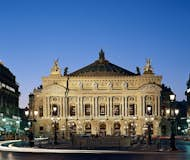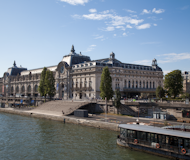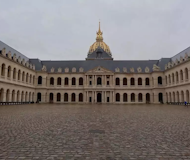

Cruise on the Seine + Opéra Garnier
Book once and enhance your experience with this convenient combination of 2 must sees
Reach out to the Tiqets Help Center, we act as a contact on behalf of the activity supplier

Opéra Garnier (or Palais Garnier) is a Parisian icon. For locals, this opulent opera and ballet house is as much a part of the cultural fabric of the city as Notre Dame, the Louvre, or the Eiffel Tower. To everyone else, it's the setting for The Phantom of the Opera. Perhaps the most beautiful opera house in the world, Opéra Garnier is full of history. Take a self-guided tour of the home of the music (of the night).
A marble imperial staircase to a Grand Foyer, make like the aristocratic guests of yesteryear and explore Opéra Garnier at your own leisure!
Charles Garnier designed the opera house for Emperor Napoleon III, but construction was held up by unusually high groundwater levels. As a solution, a series of cisterns were built to redistribute the water. This gave way to speculations of an eerie subterranean lake under Opéra Garnier. Tourists aren't allowed into the waterways of the Phantom's lair, but considering how it turned out in Leroux's novel, maybe that's for the best.
However, there are still many nooks and crannies to explore in one of the world's largest opera houses. Be impressed by the facade with its rose-marble columns, baroque statues, and intricately carved friezes. Pop into a temporary exhibition to make the most out of your visit!
Getting There:
Take any public transport that stops at Opéra Garnier.
| Friday | 10:00 - 17:00 |
| Saturday | 10:00 - 17:00 |
| Sunday | Closed |
| Monday | 10:00 - 17:00 |
| Tuesday | 10:00 - 17:00 |
| Wednesday | Closed |
| Thursday | 10:00 - 17:00 |



Combine Opéra Garnier with other Paris favorites. Some things are better together.


Book once and enhance your experience with this convenient combination of 2 must sees


Book once and enhance your experience with this convenient combination of 2 must sees


Book once and enhance your experience with this convenient combination of 2 must sees


Book once and enhance your experience with this convenient combination of 2 must sees


Book once and enhance your experience with this convenient combination of 2 must sees


Book once and enhance your experience with this convenient combination of 2 must sees


Book once and enhance your experience with this convenient combination of 2 must sees


Book once and enhance your experience with this convenient combination of 2 must sees


Book once and enhance your experience with this convenient combination of 2 must sees


Book once and enhance your experience with this convenient combination of 2 must sees


Book once and enhance your experience with this convenient combination of 2 must sees


Book once and enhance your experience with this convenient combination of 2 must sees
